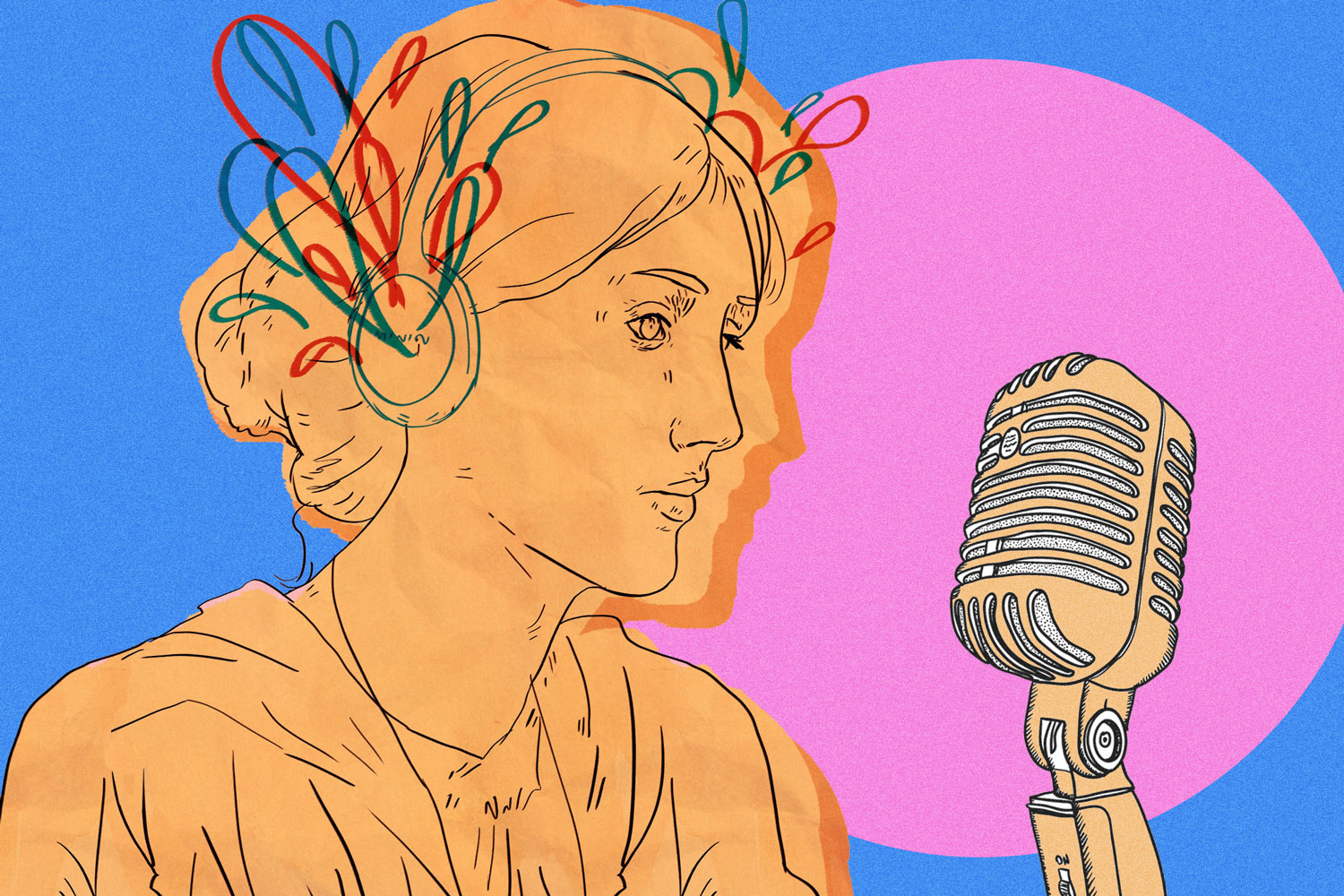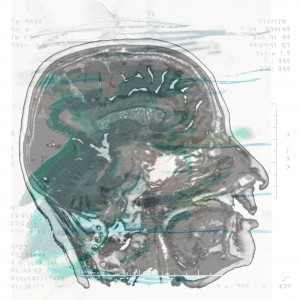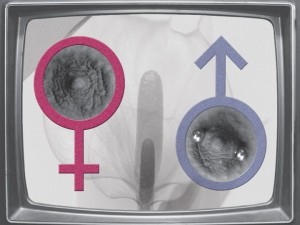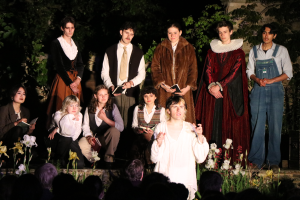
100 years ago Virginia Woolf described ASMR. Why is it still taboo?
by Cara Nicholson | January 28, 2019
I have friends who readily watch videos where people play with slime, clean their kitchen sink or even pop another person’s spots. Even if you aren’t familiar with the term ASMR (Autonomous Sensory Meridian Response), you might recognize the static-like sensation that permeates the head and neck when certain calming triggers are applied. Until recently, the phenomenon went unnamed and unintentional. For me it was a French exchange student’s accent, an optician’s brusque manner, or getting my hair scraped into place before a ballet show. Such instances have all at various moments sent me into an oddly sleepy state.
The concept of recording videos that instigate ASMR began to gain traction in 2009. Having only stumbled across one of them last year, I find I am late to the party in putting a name to the feeling with which I am so familiar. Since then, both curiosity and headaches (read: hangovers) have led me to sporadically dip into the huge pool of quiet or whispered content available. I am as fascinated by ASMR’s potential to connect people while simultaneously offering a place of respite from the mayhem of modern living, as I am mesmerized by the actual feeling it gives me.
What started with a simple format of lo-fi ‘whispering’ videos cropping up in 2009 escalated into a significant section of YouTube overtaken by the ASMR community, complete with multiple sub-genres. Self-proclaimed ASMRtists can spend days creating scripts, sourcing sets, and saving up for expensive microphones to make roleplay type videos. While most YouTubers spend the first few minutes of a video asking viewers to like, comment, and subscribe, roleplays prioritize an immersive experience that keeps the fourth wall firmly in place. Remarkably, a passage from Virginia Woolf’s Mrs Dalloway (1925) appears to describe ASMR long before it was even afforded an official term:
‘K… R…’ said the nursemaid, and Septimus heard her say ‘Kay Arr’ close to his ear, deeply, softly, like a mellow organ, but with a roughness in her voice like a grasshopper’s, which rasped his spine deliciously and sent running up into his brain waves of sound which, concussing, broke. A marvellous discovery indeed – that the human voice in certain atmospheric conditions (for one must be scientific, above all scientific) can quicken trees into life!
Today, the nursemaid’s tones that bewitch Septimus, echo in the thousands of search results that answer a simple YouTube search for “ASMR doctor”. Ranging from ASMR Darling’s self-explanatory “ASMR Doctor Roleplay – Yearly Exam” with 6.2 million views, to quirkier videos such as ASMR Angelica’s “1300s A.D. ASMR Nun Takes Care of You in Bed,” there’s something for everyone. As the parenthetical in Angelica’s title, “(You Have the Plague)” suggests, ASMRtists are ready to occupy a niche area of interest.
ASMR devotees have coined various phrases such as “brain tingles” and “attention induced euphoria” to explain the feeling in innocent terms, but descriptions like “skin orgasm” are lie more in the vein of Woolf’s ‘quickening of trees’, further mystifying the sensation and fueling sceptics who associate ASMR with sexual arousal. Moreover, most ASMRtists are female.
However, the assumption that ASMR is strictly sexual is misled. Arguably, the popularity of female ASMRtists has as much to do with viewers feeling comfortable around women as it does with attractive women being nice to look at. The huge following received by channels adopting a maternal tone, such as like Gentle Whispering ASMR (1.5M subs) and WhispersRed ASMR (665,000 subs), as well as roleplay scenarios which involve intimate, though strictlya-romantic and professional interactions such as trips to the hairdresser, stand testament to this. While it’s understandable that first time viewers might confuse the “close up” nature of videos with a peculiarly simulated sexual advance, more troubling is the assumption that feigned physical contact could only ever be erotic.
Rather than represent a niche innovation in softcore pornography, perhaps ASMR stands as a product of the diminishing number of real-world interactions, and the resulting demand for them as online simulations. Ironically, the same phenomena of technological advancement that brought us self-checkouts and online ordering provides the means by which ASMRtists film and edit roleplay videos tapping into our nostalgia for customer service. Of course, there will always be someone on the internet willing to distort a genre for profit. For those who cringe easily, the “girlfriend roleplay” represents peak ASMR.
If we are to accept that the most wholesome of whispering in someone’s ear could still be sexualized, the question of child safety must be raised. The free growth of ASMR content has largely seen an absence of boundaries to protect the exposure of young people to online exploitation. The prospect of young people becoming ASMRtists to combat social isolation is concerning. Issues of child pornography and online abuse are a dark minefield aimed at exploiting the same vulnerable children who might look to YouTube to alleviate boredom and loneliness. This may appear as an unnecessary exaggeration, but one of YouTube’s largest child stars LifewithMaK (1.2M subs) recently garnered controversy after the 13-year-old posted a video entitled “ASMR SASSY Police Officer”. Wearing a policewoman dress and handcuffs, the video clearly echoes old school fantasies as played out in porn films and party costumes. Though children making ASMR content are unlikely to identify themselves as victims of exploitation, the problem lies with the people who sexualize them. It seems irresponsible to run the risk of benign children being unwittingly sexualized.
Tapping into the commercial possibilities of ASMR, reputable brands are either normalizing the phenomena or pillaging people’s ideas. Renault recently took to a whispered advert to equate the joy of driving their cars with the soothing sensation of ASMR. ASMR content creators also benefit from paid partnerships to make a living filming activities as effortless as mukbang, a Korean trend in which people eat large quantities of food on camera. What some would argue began as a viable art form (what isn’t performance art at this point?), is now a lucrative opportunity for collaborations selling headphones, clothing and snacks. ASMR content relies upon the repetition of simple triggers like tapping or hand movements, so channels are unlikely to dry up under pressure to create original content. The question of whether YouTube itself is a sustainable platform on which to make a living remains debatable, and a shift towards apps such as Tingles or communities via Patreon is to be anticipated. With increasingly regular coverage of ASMR in the press, and research mounting into possible uses of ASMR to soothe children with autism, ASMR has become a more recognized, normalized, and more importantly, commercialized interest. It is the taboo, rather than ASMR itself, that I expect to become extinct. What emerged in the public eye as a guilty pleasure and a bit of a meme must be recognised as a valuable tool in today’s mental health crisis. While the public must eventually abandon their self-conscious reservations, I plan to enjoy the bemused reactions of the hapless few who can’t feel ASMR. ∎
Words by Cara Nicholson. Illustration by Sophie Kuang and Antonio Perricone.




